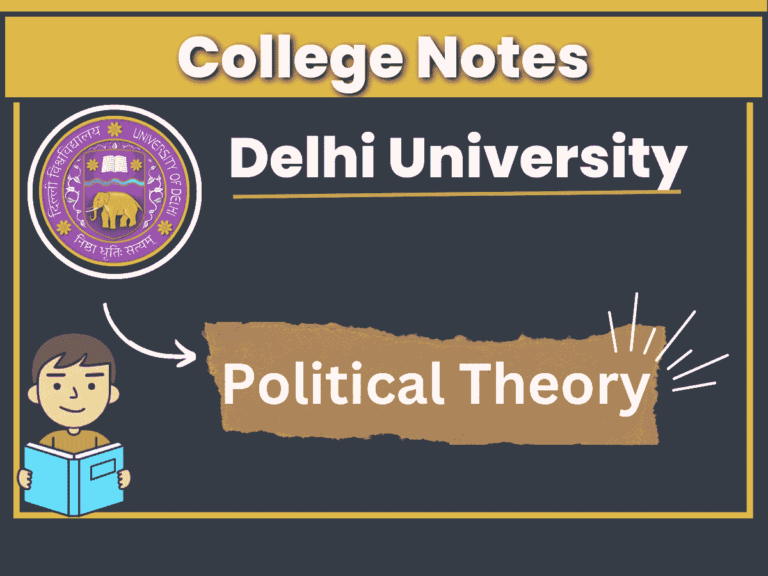The evolution of the Indian nation state from the pre-colonial state to the modern state | Thomas Panthem
Rise of the Indian State can be understood mainly through two thinkers. Thomas Pantham and Sudipta Kaviraj present their ideas on the basis of thinker theory and thought and ideology and practice.
Stages of development of the Indian state
according to Thomas Pantham, the process of the Indian nation-state began generally after 1947 (post-independence). Indian political power shifted from its colonial rulers (British states) to the leaders of the independence movement. Political identity and political culture also underwent a massive change in this transfer of power.
The political culture continuity of Indian moral culture and traditions was also suppressed under colonial rule, which was attempted to be revived. Thomas Pantheum divides the development of the state in the pre-colonial state into three phases –
- Maurya Empire (Ashok),
- Gupta Empire (Samudragupta II),
- the Mughal Empire (Akbar)
in pre-colonial history “Pan Indian State” was an exception to the level of the rural community, the structure of power kept changing depending on their relationship with each other. We see loyalty to caste, region, and family even during British rule and this pan-Indian vision is visible to us even during the time of Ashok Chandragupta and Akbar.
In the Indian historical context, the supremacy and sovereignty of Brahmins are seen and governed according to one religion and the job of the king was to maintain the varna system. The work of Kshatriyas was in the form of bureaucracy, police, and army which was used for revenue and maintenance of temples. His duties were used as a form of raj dharma.
Maurya Empire
Pan India State flourished only during the Maurya period. Brahmanic supremacy was considered natural. The state did not develop as a political institution. Autonomy was granted to the political and social-religious spirit. This type of change started with the heretical movement of Buddha and Jain.
The second change comes from Kautilya’s Arthashastra. According to Romila Thapar, Indian social and economic change begins through Jainism and Buddhism. Economic change Buddhists favored earning money through religious rather than commercial, for this they considered Buddhist Shanghai to be appropriate.
According to Luise Durnond, Brahmin supremacy changed into a social hierarchy, and Buddhism presents a republican view of political life and a compromised view of the state. Buddhism was not a matter of religious faith at the time of Maurya. It was in the form of a social and intellectual movement that affected various aspects of society.
Gupta
the period was governed by Kautilya’s principle of state rule. According to Kautilya Arthashastra, which is described in the Arthashastra, the danger of anarchy is not found in the autocratic king either in reconstruction or in individualism. Political and social autonomy existed. BR Mehta, the supremacy in Brahmanic doctrine, Dharmashastra, and Shantiparva belonged to the Brahmins but when we come to Kautilya here the king had the ultimate power. Religion became a personal matter for the people. The king had sovereignty in terms of legislative, judicial, and executive powers.
The first centralized strong Indian state was formed during the time of Chandragupta, Bindusara, and Ashoka. Romila Thapar considers the model theory and Chakra as the hub of power to represent the
Gupta state.
In the Maurya period, socio-economic and religious differences were scholarly and there were differences between Buddhism and Jainism, therefore, on the basis of morality, Emperor Ashoka restored Dhamma in place of Arthashastra. The Dhamma doctrine contributed little in terms of bringing about social stability and unity.
Pyramidally fragmented state
form of decentralized state – the king achieved political supremacy through cultural ritual supremacy. Ruled through small kings. During the time of the Pallavas and Cholas, the rulers were ruled through petty kings or merchants, with the centralized king having religious supremacy and the lower-level kings having political supremacy.
Matrimonial Bureaucratic State – The pre-modern state administration parineeti is seen under the rule of Akbar during the Mughal period. Here bureaucratic system existed in the form of centralized mansabdari and hierarchies also existed in them. The empire was divided into Sabha, Sarkar, and Mandal. The patriotism of these bureaucrats towards the nation is visible.
In colonial times
The British colonial state abolished the old state form of India and started ruling on the basis of the European model. associated with capitalist modernity. The East India Company came to India in 1619 for the purpose of doing business during the time of Mughal Emperor Jahangir and after the revolution of 1857, established its complete rule over India.
In 1765, Diwani was collected by the East India Company in Bengal. The military rebellion was controlled through Diwani. Pitts India Act of 1784, the Company began to rule India indirectly. In 1858, an Act was passed by the British Parliament by Victoria in which Indian sovereignty was ensured under the English Crown.
The Company Raj used to get the help of Indian capitalists and merchants who wanted to earn more money. Both the Indian colonial state and modernity happened simultaneously. The colonial state was different from the pre-colonial state due to its actions. For example, the Government of India Act of 1935, by that time roads, technology, and rail routes had been developed in the Indian state.
According to Thomson & Garrett, these actions of the British have left permanent signs on the Indian state. The British state was supreme in the military, teaching, financial, resource, administration, and bureaucratic rationality.
Their main objective was to convert the Indian state into a capitalist-imperialist state. And the states were to be divided internally so that the products could be regulated. The British government abolished the inheritance of the sultans and converted the civilian-military and bureaucracy into a modern specialized military and rational bureaucracy.
A mixed form of modernity and traditions is seen, the British state used to run its modern supreme or sovereignty on the supremacy of the kings and maharajas. Religion- Company Raj followed Islamic Sharia law on caste hierarchy for social stability and state legitimacy. silver base rupee exchange Instead of gold base exchange was introduced. There was no freedom of expression, English education was introduced and we had inherited a parliamentary democratic government from the colonial state.
In the context of modernity
- Democratic
- Secular
- Development
The Indian independence movement emerged due to restrictions imposed by the British state and succeeded in taking over the rule of the British state. The Indian National Congress emerged as a democratic party that was born in opposition to the arbitrary and authoritarian forces of the colonial state.
The future of the Indian nation-state was prepared by Mahatma Gandhi. No one shall be discriminated against on the basis of gender, language, caste, or region, all shall have equal citizenship.
Rajni Kothari, this state was inspired by the principle of equality for all. All the citizens here were Indians, regardless of whether they lived at that time, such as Bengali Punjabi, etc.
Bhiku Parekh, the Indian nation-state is an institution of both individuals and communities. In which rights have been given to both the individual and the collective.
- Criminal law – for individuals
- civil law – for the community
He believed that all these could happen only in a democratic, secular, and federal state.
Secularism
With the attainment of independence, the demand for two nations India and Pakistan started gaining momentum and the Indo-Pak partition also took place. The Muslim League sought to create a separate nation on the basis of minorities. Indian Muslims gained a national political identity.
This division was due to the modern religious political ideology which Jinnah and the Muslim League used to refer to. Pakistan was not made for all Muslims but it was created for the Muslim-majority people of Punjab and Bengal. After its construction, 6 million people lived in Pakistan while 40 million people lived in India. Hence the idea of secularism and diversity did not diminish in India.
The idea of equality for all has been presented in the Indian Constitution and a provision of punishment has also been made for treating anyone with skyrocket. It was made a part of the constitution by a constitutional amendment in the year.
In the 1980s the idea of the nation-state changed to religious majoritarian nationalism as the ideology of state development moved from socialism to liberalism. Partha Chatterjee of a centralized political leader for state power, by Indian state builders, leads to the two-nation theory. Reasons for Centralized State- Centralized state power was accepted by Nehru and Patel-
because the basis of partition was Hindu-Muslim,
- for sheltering refugees, for unifying
- princely states, for
- development of appropriate economy and industrialization
colonial following arrangements were accepted from the
- 1. state status to the institution (President),
- 2. providing fundamental rights to citizens,
- 3. the idea of a federal state in the
Newly independent nation-state
- 1. national sovereignty
- 2. unity
- 3. promotion of economic development
- 4. and policies of social justice separately be adapted.
Partha Chatterjee, the ideology of development was implemented by the Indians themselves. The state was connected to the people not in the form of representation but in the form of economic development. A mixed economy was chosen by Nehru in which-
Nehru believed that he was building a post-colonial state which was secular, democratic, economic, and social. It is on the path of self-development. Maintaining sovereignty and unity, democracy, and secularism have been the great achievements of the Nehruvian state.



